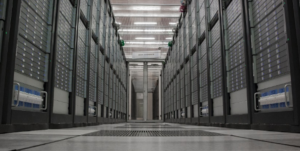The renowned European Organization for Nuclear Research (CERN), has crossed the threshold of one exabyte in disk storage capacity, and now boasts over one million terabytes of disk space dedicated to data storage.
The exabyte of storage is split across 111,000 devices, primarily hard disks and flash drives
CERN’s expansive data store isn’t solely dedicated to the storage of data from the Large Hadron Collider (LHC) but serves a wide spectrum of experiments and online data management services.
The orchestration of these storage devices, predominantly housing crucial physics data, is facilitated by CERN’s open-source software solution, EOS. This software was custom-designed to meet the exacting computing requirements of the LHC, one of the world’s largest and highest-energy particle colliders.
Situated 175 meters below the France-Switzerland border, the LHC resides within a 27-kilometer circumference tunnel and has played a pivotal role in significant discoveries, including the identification of the Higgs boson and exotic hadrons.
Andreas Peters, EOS project leader, emphasized the significance of this achievement, stating, “We reached this new all-time record for CERN’s storage infrastructure after capacity extensions for the upcoming LHC heavy-ion run. It is not just a celebration of data capacity; it is also a performance achievement, thanks to the reading rate of the combined data store crossing, for the first time, the one terabyte per second (1TBps) threshold.”
Joachim Mnich, CERN’s Director for Research and Computing, applauded this accomplishment, highlighting its implications for future scientific research endeavors. He remarked, “This achievement marks the accomplishment of a significant target in data-handling capabilities. It sets new standards for high-performance storage systems in scientific research for future LHC runs.”

CERN’s data infrastructure spans two geographically dispersed data centers—one located on its campus in Geneva, Switzerland, and the other in Budapest, Hungary. These centers are seamlessly connected via a network with minimal latency, ensuring the efficient handling of vast volumes of scientific data.
CERN is reputed for creating the World Wide Web as a project named ENQUIRE, initiated by Tim Berners-Lee in 1989 and Robert Cailliau in 1990.





